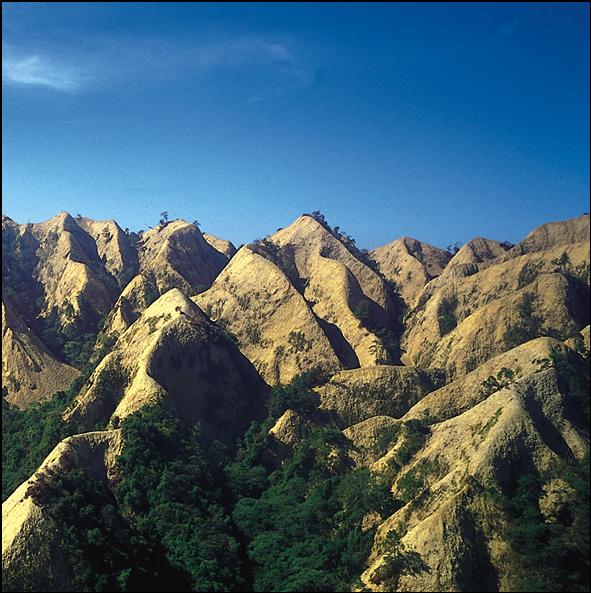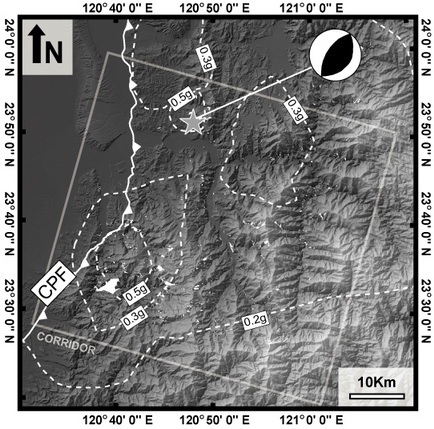

Major earthquakes cause widespread landsliding. Topographic slopes fail during earthquakes because addition of gravitational and seismic accelerations causes short lived stresses in excess of the combined cohesive and frictional strength of underlying rock and soils. Not surprisingly, the number and total volume of landslides triggered by an earthquake, and the area affected by landsliding scale with earthquake magnitude.
The Mw=7.6 Chi-Chi earthquake hit the western foothills of Taiwan on 20 September 1999. It nucleated at 8-10 km depth and caused ground rupture along a 100 km segment of the north-south trending, east-dipping Chelungpu thrust fault and recorded ground accelerations of up to 1g. More than 20,000 landslides with a total area of 150 km2 mobilized soil and sedimentary rock mainly within the 0.2g contour.
Top left : 99 peaks in central Taiwan after the Chi-Chi earthquake.
Bottom left : Map of landslides (white) triggered by Chi-Chi.
© Patrick Meunier